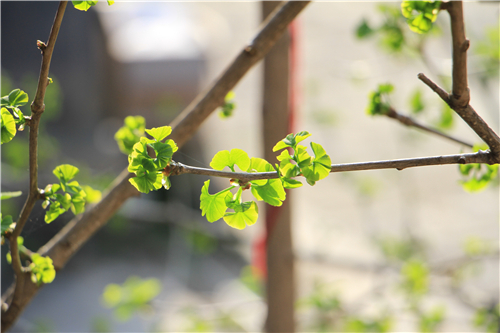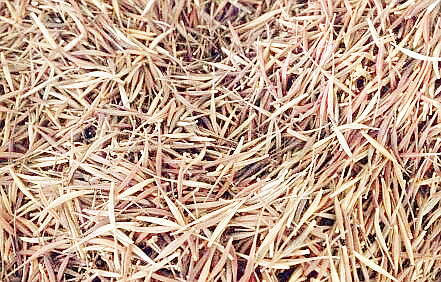The culture methods and matters needing attention of cat's eye taro, how often is better to water the cat's eye taro?
Cat's eye bamboo taro is a perennial herb of the genus Amorphophallus of the family Amorphophallus. Because its leaves stand upright at night, spread out and limp during the day, similar to cat's eyes, it is named "cat's eye" bamboo taro. Cat's eye bamboo taro is also an expert in purifying indoor air, which is deeply loved by people. Many flower friends do not know the breeding methods and matters needing attention of cat's eye taro. Let's explore it together.

I. Culture methods of Cat's Eye Taro
1. Reproduction
The propagation of Amorphophallus maoyanensis is often carried out by the method of root division, which is carried out in the early summer season, and the method of cutting can also be used for propagation.
2. Soil
The basin of cat's-eye taro should be changed every other year, and the basin soil should be loose, fertile, draining and breathable, and slightly acidic soil rich in humus. Culturing cat-eye taro can be prepared with rotten leaf soil or peat soil plus a small amount of coarse sand or perlite.
3. Lighting
Cat's eye bamboo taro is not resistant to cold and drought, and is afraid of the scorching sun. If direct sunlight burns the cat's eye bamboo taro leaves, local scorch appears on the edge of the cat's eye bamboo taro leaves, the growth of new leaves is restrained, and the leaf color turns yellow, so breeding cat's eye bamboo taro should pay attention to shading. However, the cultivation of cat-eyed taro should not be too shady, otherwise it will cause the growth of cat-eyed taro to be weak, and the markings on the leaves of some variegated varieties will fade, or even disappear. It is best to put the cat-eye taro in a bright light and no direct sunlight.
4. Temperature
When the winter temperature of cultured cat-eye taro is lower than 15 ℃, the growth of cat-eye taro is restrained. If it is lower than 13 ℃ for a long time, the leaves of cat-eye taro will suffer frost damage. Therefore, the best winter temperature of cat's eye taro is not less than 13 ℃, and more light should be taken over, sprinkling should be restrained, watering should be reduced appropriately, and the pot soil should not be dry, and then resume normal culture after new leaves grow in spring.
5. Watering
Cat's eye taro is sensitive to water, so it should be fully watered during the growing period to keep the soil moist, but the soil should not be stagnant, otherwise it will cause rot and stink at the root of cat's eye taro, or even die.
6. Humidity
The cat's eye bamboo taro leaves are larger, the water evaporates quickly, and the requirement for air humidity is higher. If the air humidity is not enough, the cat's eye bamboo taro leaves will immediately curl, and the response is very sensitive, especially during the growing period of the new leaves of the cat's eye bamboo taro, it should often spray water to the cat's eye bamboo taro, otherwise the new leaves of the cat's eye bamboo taro will be difficult to stretch, the leaf edges will be scorched and yellow, and the leaves will be small and dull.
7. Fertilization
Late spring and early summer is the growing period of new leaves of Amorphophallus maoyanensis. Mature thin liquid fertilizer or compound fertilizer is applied every 10 days, and fertilizer is applied every 20 days to 30 days in summer and autumn. In general, the ratio of nitrogen, phosphorus and potassium is 2:1:1 to make the leaves bright and beautiful.
8. Diseases and insect pests
The common pests of cat's eye bamboo taro are pink fleas, red spiders, aphids, shell insects and so on.
2. matters needing attention in the culture of cat's-eye taro
If there is no heating in the room in winter, and the temperature will be lower than 18 ℃, it is very difficult for Amorphophallus to survive the winter. when the cold winter comes, in addition to paying attention to heat preservation, watering should be strictly controlled. at this time, the potted soil is too wet to cause root rot, and even if the leaves wither a little dry, new leaves will be reissued when the spring warms up. New leaves should not be watered too much when they begin to germinate. Only with the increase of new leaves, the amount of water gradually increased.
Time: 2019-03-13 Click:
- Prev

Explain the wholesale price and planting technology of ginkgo seedling market in detail!
Ginkgo biloba is a common economic tree species in China, which is called Gongsun tree because it takes 20 years to bear fruit and 40 years to bear a lot of fruit. it has high ornamental value and medicinal value. at present, it has been widely planted in parks, greening places and other places. How much is the price of ginkgo seedlings? What are the planting techniques?
- Next

How much is the price of chrysanthemum seeds per jin? What are the planting prospects?
I believe many people are familiar with chrysanthemum. It not only has the function of ornamental, but also has the effect of clearing away heat and detoxification, so it is also very popular. In recent years, planting chrysanthemum has become a new direction for many growers, so how much is chrysanthemum seed per kilogram? What are the planting prospects?
Related
- Fuxing push coffee new agricultural production and marketing class: lack of small-scale processing plants
- Jujube rice field leisure farm deep ploughing Yilan for five years to create a space for organic food and play
- Nongyu Farm-A trial of organic papaya for brave women with advanced technology
- Four points for attention in the prevention and control of diseases and insect pests of edible fungi
- How to add nutrient solution to Edible Fungi
- Is there any good way to control edible fungus mites?
- Open Inoculation Technology of Edible Fungi
- Is there any clever way to use fertilizer for edible fungus in winter?
- What agents are used to kill the pathogens of edible fungi in the mushroom shed?
- Rapid drying of Edible Fungi

